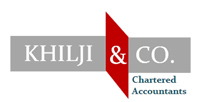This blog is written by Mr. Agha Mudassar Khan. Please read this blog and provide your valued comments
Lifting the Veil of Ultimate Beneficial Ownership
Knowledge about real owners of any corporate vehicle is pivotal in worldwide efforts to fight against corruption, preventing money laundering, countering terror financing and combating tax frauds. Numerous empirical case studies show that corporate enterprises, including companies, trusts, foundations and other type of entities are often used as a veil to hide proceeds of delinquent means and thenon financing for the crimes, thus making it imperative to identify and evaluate Ultimate Beneficial Ownership (UBO) behind such enterprises and assess risks associated with them.
Since the creation and emergence of the Financial Action Task Force (FATF) in 1989, cognizance about UBO has emerged as a crucial concept for the performance of the parties/ institutions dealing or undertaking business transaction on behalf of another enterprise.
Who can be an Ultimate Beneficial Owner?
As per the commonly and internationally accepted definition under various jurisdictions, UBO, can be any person who:
- who holds 25% or more of share capital; or
- who exercises 25% or more of the voting rights; or
- is a beneficiary of 25% or more of the legal entity’s capital; or
To keep it simple, UBO is an individual who benefits the most and has the ultimate effective control over an arrangement, a legal or a natural person on whom behalf the transactions are being made.
Organizations Under Obligation to Check for Ultimate Beneficial Owner
As per the Anti-Money Laundering (AML) and Counter Financing for Terrorism (CFT) regulations and part of “Know Your Customer” compliances requirements, certain types of business have the obligation to conduct customer due diligence and research and inquire the identity of UBO of their business relations before the commencement of their business relationship, i.e. parties on whose behalf they would need to execute a business transactions and mobilizing funds and mainly include:
- Commercial and investment banks;
- Insurance firms;
- All companies that can handle money, such as credit unions, money transfer businesses, payment gateways, real estate agents and Designated Non-Financial Businesses and Professions (DNFBPs).
As long as the business relationships remain active, it need to be verified from time to time that the UBOs have not changed.
How to Check for an Ultimate Beneficial Owner?
Best practices may entail following steps in identifying and establishing an UBO:
- Acquire the entity’s credentials
Obtain up-to-date information regarding its register number, name, address, official status, and top management employees, either directly or through available and reliable 3rd party platforms,
such as tax authorities, chambers of commerce and business and corporate regulatory bodies etc.
- Identify and locate ownership chain
Identify natural or legal persons who have a percentage in shares or interests and determine if the ownership is direct or indirect.
- Single out the ultimate beneficiary
Check the total percentage of shares, management control, and ownership stake of every individual and calculate if one of them falls under the definition of UBO (25% check)/ has the most benefit.
Risk Response to each Ultimate Beneficiary
Based on the information gathered each UBO may fall into different categories needing different further verification approaches.
- Low risk
For low-risk UBOs, it is enough to ask the client to confirm their identity and to sign a statement with the mentioning of all their details, such as name, address details, passports/ IDs and ID’s photographs.
- Mid to High risk
If the UBO is a Politically Exposed Person (PEP), or if there is information available or there are any signs related to terrorism or money laundering, further investigation is required.
In such cases, enhanced due diligence measures, recommended by Financial Action task Force (FATF), may include the following:
- Perform additional searches to collect identifying information from a wider variety of sources and using this information to assess the individual person’s risk profile;
- Analyze the source of funds or wealth involved in the business relationship and perform checks to satisfy that they do not constitute the proceeds of any crime and conform that there exist no discrepancies between the income, the source of wealth, and the overall net worth;
- Requesting additional information from customers it deals with about the purpose and intended nature of the business relationship;
- Requiring the clients to provide updated information about any changes in substantial ownership on ongoing basis, but at least annualy.
Challenges faced during UBO Identification and Verification Process
UBO identification and verification process can be quite difficult and may lack collection of reliable information owing to various challenges, such as:
- Complex ownership structures of the legal entities;
- Legal entities established in high secrecy jurisdiction (i.e., Samoa, Cayman Islands, Panama);
- Poor coordination and diplomatic relations between different countries;
- False accountholder’s declarations on UBOs;
- Limited information available on offshore accountholders; and
- Unqualified and untrained staff to carry out the tasks
Reporting Requirement about UBO on Corporate Entities in Pakistan
As per the amendments introduced by the Securities and Exchange Commission Pakistan (SECP), under Companies (General Provisions and Forms) Regulations, 2018 with effect from 18th September, 2020 every company and registered Limited Liability Partnership (LLP), are mandatorily required to obtain, maintain and update information about its UBO. Following forms are required to be made or filed in this, as applicable:
Agha Mudassar Khan

Leave A Comment